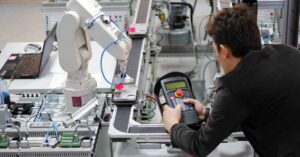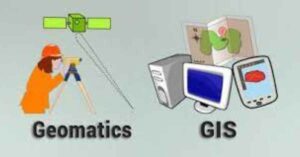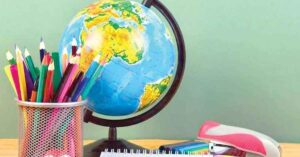
Pak Navy Chemistry MCQs with Answers
If you are a student who aspires to join the Pakistan Navy and wants to prepare for the chemistry section of the entrance exam, then this guide is for you. We provide you with essential chemistry MCQs with answers covering a wide range of topics, including atoms, chemical bonding, acids and bases, chemical reactions, and more.
By studying these MCQs, you can enhance your understanding of the subject and increase your chances of performing well in the chemistry section of the exam. These MCQs are designed to help you prepare for the exam and provide you with the necessary knowledge and skills required to pursue a career in the Pakistan Navy.
With easy-to-understand explanations and detailed answers, you can prepare for the exam with confidence and achieve your dream of serving your country. So, if you are looking to prepare for the chemistry section of the Pakistan Navy entrance exam, then our guide is the perfect resource for you.
Best Chemistry MCQs with Answers for Navy Tests
Find most common and repeated Chemistry MCQs with Answers in the following;
- The smallest particle of an element that retains its identity in a chemical reaction is an _____. (atom)
- The number of protons in an atom’s nucleus is called its _____. (atomic number)
- The sum of the number of protons and neutrons in an atom is called its _____. (atomic mass)
- A positively charged ion is called a _____. (cation)
- A negatively charged ion is called an _____. (anion)
- A chemical bond resulting from the sharing of electrons between two atoms is called a _____. (covalent bond)
- A chemical bond resulting from the transfer of electrons from one atom to another is called an _____. (ionic bond)
- The smallest unit of a covalent compound that retains its properties is a _____. (molecule)
- The attractive forces that hold molecules together in a solid or liquid are called _____. (intermolecular forces)
- The study of the composition, structure, and properties of matter is called _____. (chemistry)
- The process by which a liquid changes into a gas at a temperature below its boiling point is called _____. (evaporation)
- The process by which a gas changes into a liquid is called _____. (condensation)
- The process by which a solid changes directly into a gas is called _____. (sublimation)
- The amount of matter in an object is called its _____. (mass)
- The resistance of a liquid to flow is called its _____. (viscosity)
- A homogeneous mixture of two or more substances is called a _____. (solution)
- The substance that is present in the largest amount in a solution is called the _____. (solvent)
- The substance that is present in the smaller amount in a solution is called the _____. (solute)
- A mixture in which particles can be seen and easily separated by settling or filtration is called a _____. (suspension)
- The amount of solute in a given amount of solution is called the _____. (concentration)

Check also: Free Online Notes of Chemistry MCQs with Answers
Best Chemistry MCQs with Answers for Navy Tests
Find most repeated Chemistry MCQs with Answers for the initial tests of Pak Navy Tests in the following;
- The ability of an atom to attract electrons is called its _____. (electronegativity)
- The bond angle in a tetrahedral molecule is _____. (109.5 degrees)
- The temperature at which a solid changes into a liquid is called its _____. (melting point)
- The temperature at which a liquid changes into a gas is called its _____. (boiling point)
- A solution that contains the maximum amount of solute at a given temperature is called a _____. (saturated solution)
- A solution that contains less solute than a saturated solution at a given temperature is called a _____. (unsaturated solution)
- A solution that contains more solute than a saturated solution at a given temperature is called a _____. (supersaturated solution)
- The process by which light is emitted by certain substances when they absorb energy is called _____. (fluorescence)
- The process by which light is emitted by certain substances when they absorb high-energy radiation is called _____. (phosphorescence)
- The number of waves that pass a given point in one second is called the _____. (frequency)
- The distance between two consecutive wave peaks is called the _____. (wavelength)
- The measure of the average kinetic energy of the particles in a substance is called _____. (temperature)
- A measure of the disorder or randomness of a system is called _____. (entropy)
- The amount of energy required to raise the temperature of 1 gram of a substance by 1 degree Celsius is called its _____. (specific heat)
- The smallest unit of matter is an __________. (atom)
- A substance made up of two or more elements that are chemically combined is called a __________. (compound)
- The center of an atom is called the __________. (nucleus)
- The number of protons in an atom is called the __________. (atomic number)
- The sum of protons and neutrons in an atom is called the __________. (mass number)
- A positively charged ion is called a __________. (cation)
100% Passing Chemistry MCQs with Answers for Initial Tests
In the following, you must prepare most important Chemistry MCQs with Answers for the initial tests of Navy Officers and Sailors Tests;
- A negatively charged ion is called an __________. (anion)
- The process by which a solid changes directly into a gas is called __________. (sublimation)
- The process by which a gas changes into a liquid is called __________. (condensation)
- A type of chemical bond in which electrons are shared is called a __________ bond. (covalent)
- A type of chemical bond in which electrons are transferred from one atom to another is called an __________ bond. (ionic)
- The group of elements in the periodic table that have similar properties and electron configurations is called a __________. (group/family)
- The horizontal rows in the periodic table are called __________. (periods)
- A substance that speeds up a chemical reaction without being consumed in the reaction is called a __________. (catalyst)
- The reactant that is completely used up in a chemical reaction is called the __________. (limiting reagent)
- The branch of chemistry that deals with the study of carbon compounds is called __________ chemistry. (organic)
- The smallest particle of an element that retains the chemical properties of that element is called a __________. (atom)
- A bond between atoms in which the electrons are shared unequally is called a __________ bond. (polar)
- The amount of energy required to remove an electron from an atom is called the __________. (ionization energy)
- The study of the properties and behavior of matter is called __________. (chemistry)
- The law that states that the total mass of the reactants in a chemical reaction is equal to the total mass of the products is called the law of __________. (conservation of mass)
- The process by which a liquid changes into a gas at a temperature below its boiling point is called __________. (evaporation)
- A substance that changes color in the presence of an acid or base is called an __________. (indicator)
- A solution with a pH less than 7 is considered __________. (acidic)
- A solution with a pH greater than 7 is considered __________. (basic)
- The sum of the atomic masses of all the atoms in a molecule is called the __________. (molecular weight)
- The amount of solute present in a given amount of solution is called the __________. (concentration)
- A measure of how much solute can dissolve in a given amount of solvent is called the __________. (solubility)
- The process of separating a mixture by boiling and condensing its components is called __________. (distillation)
- The study of the rates at which chemical reactions occur is called __________. (kinetics)
- A substance that can act as both an acid and a base is called an __________. (amphiprotic)
Best Chemistry MCQs with Answers for Navy Tests
Students are advised to learn the following Chemistry MCQs with Answers which are very very important for the Navy initial tests;
- What is the chemical symbol for gold? (Au)
- What is the pH scale used to measure? (Acidity or alkalinity of a solution)
- What is the process by which a solid changes directly into a gas without passing through the liquid phase called? (Sublimation)
- What is the most abundant gas in the Earth’s atmosphere? (Nitrogen)
- What is the chemical formula for water? (H2O)
- What is the process by which plants convert light energy into chemical energy called? (Photosynthesis)
- What is the process by which a gas changes into a liquid? (Condensation)
- What is the smallest particle of an element that retains the chemical properties of that element called? (Atom)
- What is the term used to describe the amount of space that a substance takes up? (Volume)
- What is the chemical formula for carbon dioxide? (CO2)
- What is the symbol for the element carbon? (C)
- What is the chemical formula for water? (H2O)
- What is the pH scale used to measure? (Acidity/basicity of a solution)
- What is the name of the process where a solid turns into a gas without passing through the liquid phase? (Sublimation)
- What is the chemical formula for methane? (CH4)
- What is the process by which plants use sunlight to convert carbon dioxide and water into glucose and oxygen? (Photosynthesis)
- What is the chemical formula for sulfuric acid? (H2SO4)
- What is the chemical formula for ammonia? (NH3)
- What is the process by which a liquid turns into a gas at a temperature below its boiling point? (Evaporation)
- What is the name of the process by which a gas turns into a liquid? (Condensation)






